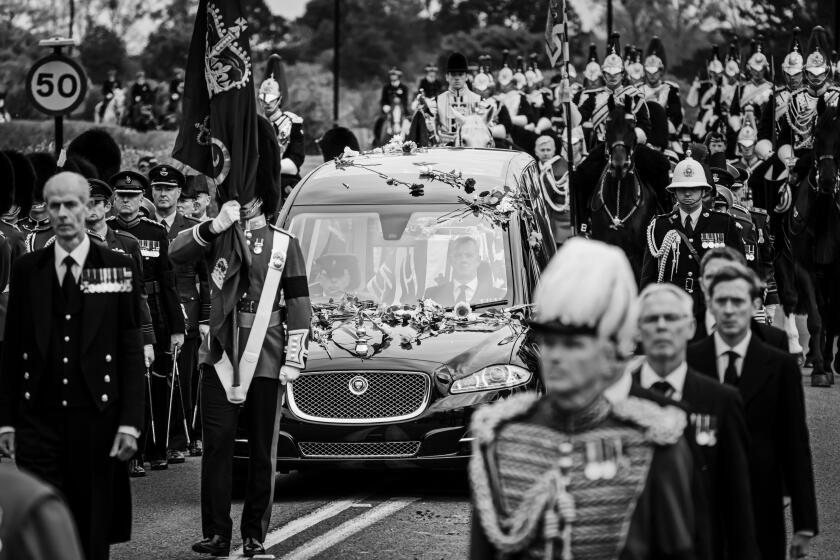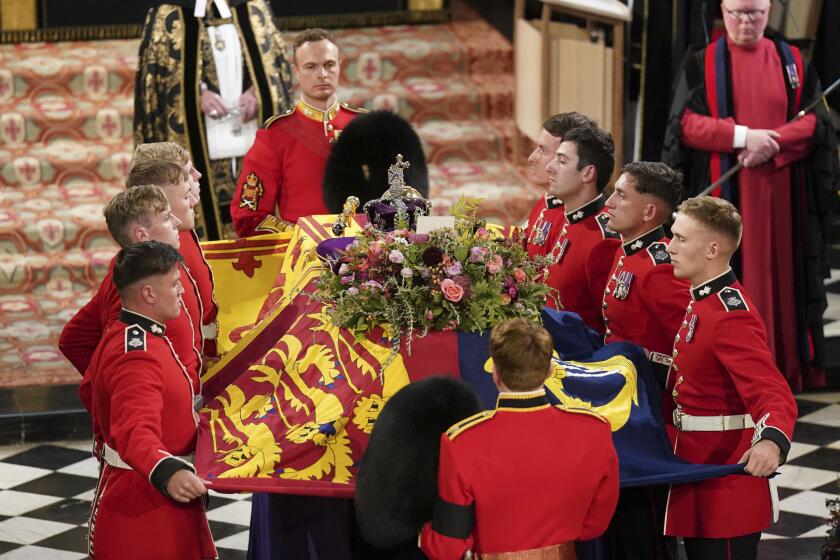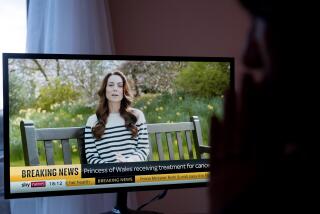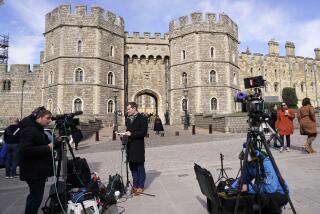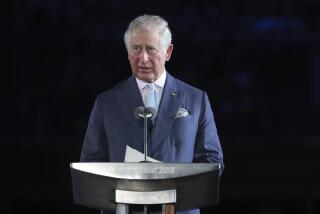Burial fit for a queen, yes, but what of monarchyâs true cost?
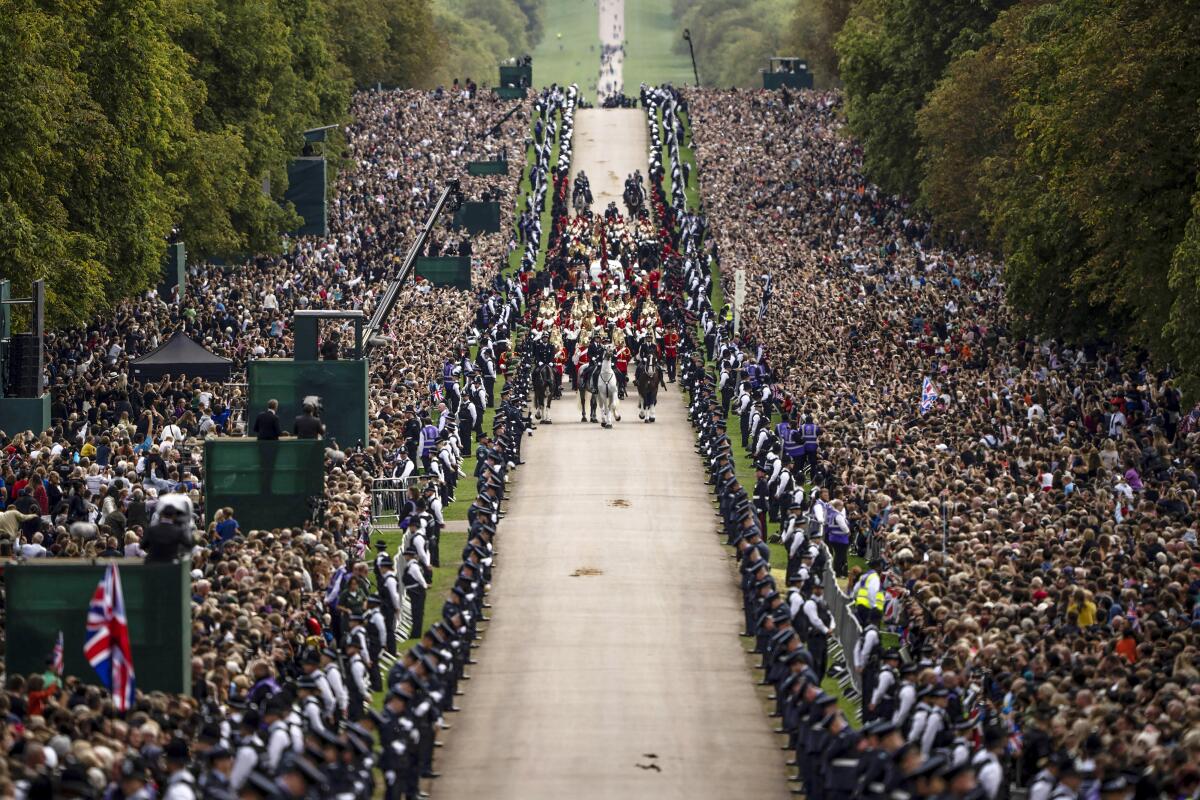
LONDON â Many Britons are feeling poorer all the time. But their royal family is very rich indeed.
Now that the cinematic spectacle of Queen Elizabeth IIâs funeral is over, and the spasm of national grief over a beloved monarchâs death is beginning to subside, attention is turning back to the royal coffers â which are, for a certain slice of the British public, a perennial sore point.
As is the practice for state funerals, British taxpayers will foot the still-undisclosed bill for 10 days of solemn, grandeur-filled pageantry that culminated in Mondayâs funeral, a trio of elaborate ceremonies that ended with the queenâs interment in Windsor Castle.
With hundreds of world leaders including President Biden in attendance, and a miles-long queue of the queenâs subjects patiently waiting for a chance to view her lying in state, police officers blanketed London in what authorities say was the countryâs largest-ever security operation.
With the British public and millions watching across the world having learned the meaning of words like âcatafalque,â âcortegeâ and âcrucifer,â the government says the funeralâs cost will be disclosed âin due course.â
Los Angeles Times photographer Marcus Yam is on the ground in London to bring a visual perspective as Britain says goodbye to the queen.
Itâs clear that in the eyes of some, even signaling for the check is heretical.
âIs one allowed to ask who is paying for all this, or will one be arrested?â David Baddiel, a 58-year-old comedian, inquired in a tweet that led to an angry online pile-on.
Plainly, all that pomp and splendor didnât come cheap.
Some estimates put the total cost â the funeral, along with King Charlesâ upcoming coronation, a concomitant bank holiday, and the expense of having to switch out the currency to a new sovereignâs emblazoned image â at more than $6 billion.
That level of expenditure makes for a jarring juxtaposition, with a raft of cost-of-living increases set to plunge more Britons into poverty than ever before.
The country is already facing 8.6% inflation rate in its Consumer Price Index. Come October, gas bills will rise by almost a third, and thatâs after a government-mandated cap on energy prices.
No fewer than 5.6 million people have been forced to forgo a meal in the last three months, and nearly 8 million have sold personal items to cover the cost of living, polls show. The Federation of Small Businesses, a business lobbying organization, says more than half of small companies expect to stagnate, downsize or simply shut down in the next year; even hospitals and schools will struggle to keep their doors open.
Beyond the funeral costs, whatever they turn out to be, the British government funds a so-called Sovereign Grant, an annual payment given to the royal family for official travel, property maintenance and operating costs of the monarchâs household.
For this year, it amounted to almost $100 million, and included additional funds for restoration of Buckingham Palace. Security costs are not included in that calculation, but are paid for by the government and are kept secret.
Queen Elizabeth IIâs state funeral draws presidents and kings, princes and prime ministers â and crowds of mourners in the streets of London.
As in other parts of the Commonwealth and the United Kingdom itself, all that has galvanized anti-monarchists and those who call for a reexamination of just how much the British public should be paying for their hereditary dynasty.
âWe do give the royals an awful lot of money every year,â said Graham Smith, chief executive of Republic, a group that â as its name implies â campaigns for the United Kingdom to abolish its monarchy and for a republic to take its place with an elected head of state.
Smith noted that Charles, under an agreement made with the government in 1993, will not have to pay inheritance tax, unlike compatriots who are taxed 40% on any part of an estate valued above 325,000 pounds, almost $370,000.
So although state funerals are an accepted taxpayer expense, âit would be a helpful gesture if [Charles] was willing to offer some compensation for this enormous cost, given that weâre struggling to pay for hospitals, police and schools,â Smith said.
Another sore spot for anti-royalists are the sprawling holdings of the royal family. A prime money-maker is the late queenâs Duchy of Lancaster, which according to recent financial statements is worth roughly $740 million and made more than $27 million in profit; this now passes to Charles tax-free, depriving the exchequer, or treasury, of billions in revenue.
Another, even more lucrative holding is the Duchy of Cornwall, valued at $1.3 billion and whose ownership automatically transferred to Prince William once Charles took the throne, with no corporate taxes paid. That is all in addition to other properties the crown holds but cannot sell, including Buckingham Palace, Kensington Palace and two crown estates.
Other personal assets that passed from the late queen to Charles include her investments, art collection, jewelry and rare stamps, as well as Balmoral Castle in Scotland. The total fortune is estimated at around $28 billion.
Monarchists, however, point out that the royal family is an important draw for tourism to the United Kingdom and that the Sovereign Grant costs as little as $1.50 per subject per year â hardly a problematic sum for such a storied symbol of soft power.
âI really donât care how much any of this costs,â tweeted Isabel Oakeshott, a journalist and editor with British channel Talk TV. âI can think of no better use of our taxes right now. It is quite simply who we are.â
The funeral and associated events, she wrote, âhave been a reminder of all that is great about Britain. Tomorrow normality will return, with all its crippling bills, NHS waiting lists and late running trains, but we can hold onto this.â
The monarchy remains broadly popular among Britons, with the latest polling suggesting about 68% have a positive opinion of the institution. Younger people, though, are less enthusiastic than their elders, with fewer than half of 18-to-24-year-olds saying Britain should continue to have a monarchy, compared with 86% of those over 65.
Thereâs no getting around the fact that royal send-offs are expensive. Princess Dianaâs 1997 funeral cost between 3 million and 5 million pounds in 1997, or somewhere between $7 million and $8 million when adjusted for inflation. In 2002, the Queen Motherâs cost roughly $10 million in todayâs dollars, much of it for security.
But those are all dwarfed by expenditures surrounding the funeral of Britainâs longest-serving monarch, Elizabeth, who reigned for 70 years and 214 days.
In addition to the tab for more than 10,000 police officers, 1,500 army personnel and thousands of marshals and volunteers for the funeral alone, not to mention a contingent of Britainâs elite Special Air Service on standby in case of terrorist attacks, there was another associated cost: the bank holiday on the day of the funeral.
Most businesses were closed, along with the London Stock Exchange. For comparison, government data estimated that the bank holiday in June celebrating the queenâs Platinum Jubilee incurred a 0.6% slump in the countryâs gross domestic product.
âIt cost a lot of people a lot of money, particularly small businesses,â said Smith. And though public holidays can be linked to an increase in spending in restaurants and hotels, this wasnât the case here, he added, because immense crowds made moving about so difficult.
To be sure, many vendors readily accepted the idea of closing down for the day, including Ryan Boyle, a clothes seller in Brick Lane.
âLook, Iâm Irish, but I bear her no ill will,â the 59-year-old said. âSheâs dead, and Iâm not. Iâm grateful for that and I donât mind closing out of respect.â
Others appeared less sanguine. Pio, a Soho tailor who did not want his full name used for reasons of privacy and to avoid alienating staunchly royalist customers, grumbled about having to give his employees a day off for the funeral.
âIâm the one paying for it,â he said.
The new king has talked about a slimmed-down royal family, and also a less expensive coronation for himself, when it takes place next spring or summer. But the overall costs of the royal transition â funeral, bank holiday weekend, coronation and new currency â âcould get us 13 million nurses,â Smith said.
âItâs very much a one-way street,â he said of the royal family, âin terms of what we give and they take.â
More to Read
Sign up for Essential California
The most important California stories and recommendations in your inbox every morning.
You may occasionally receive promotional content from the Los Angeles Times.
